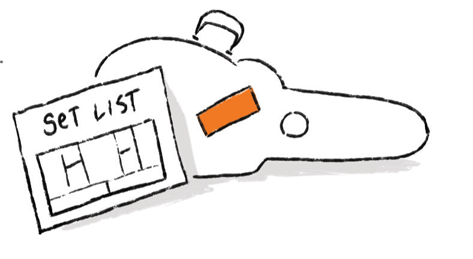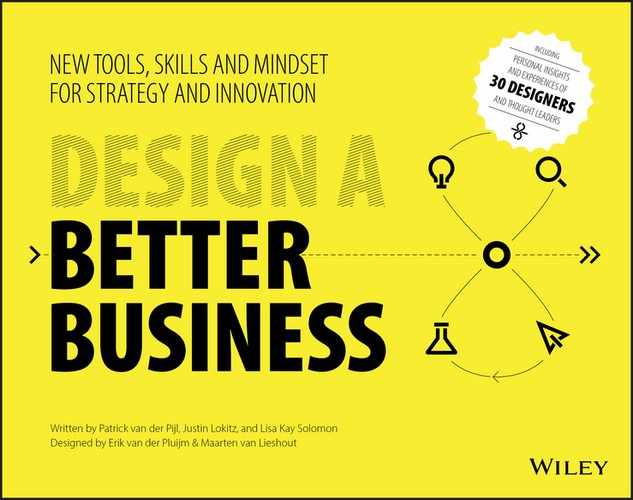Page 188

Page 189
Any business evolves and needs to transform. If it doesn’t, it will go extinct. This is what happened to Commodore, a great technical product that found great traction and interest from customers worldwide. But they forgot to figure out their next transformation.
If you ask me what and how we pivoted, I would ask you back what exactly you mean by pivot. From my point of view, a pivot is jargon in the startup world that has different meanings to different people. I do believe transformation of your business is the key to survival. You need to be open about unmet customer needs that must be fulfilled.
Our team came from Tom Tom, the in-car navigation company. We obviously had a passion for geo-positioning. Our first thought was to develop the best geo-positioning product out there. We hunkered down for almost 1.5 years and developed what we thought was the best outdoor positioning technology in the world. We just needed to find the right audience and business model.
Page 190
CASE STUDY GOSPARC:THE MASTER OF THE PIVOT
1 1ST PIVOT = BUREAUCRACY

We identified a need for our software in the education sector in the UK. Students who get their visa to study in the UK do not always show up to the classroom. To deal with this, universities implement costly infrastructure. Whereas ours was cheaper and technically better. We found a customer need, we had a solution, and we identified more customers who wanted to pay for this. But we had to pivot. In order to sell our technology we were required to submit a tender to each of the universities, a process that would take us three years. We decided to turn away (quickly).
2 2ND PIVOT = NO TASTE FOR DATA

We started to look into other markets. Sports sounded interesting to us. We could offer positioning data to athletes to get insights and perform better. This was the customer need we were looking for. However, our customer base not really well developed. We were solving a problem, but we had no idea how to employ a solution. We needed to get a lot of content (data) in order for our customers to deliver relevant information back to us. To be honest, we needed to drive a lot of efforts in a market we did not care much about. If you not an expert in something, forget it. You need to know this stuff cold. We pivoted again. Well, we half pivoted because we sold the solution to our Canadian partners.
3 3RD PIVOT = DIFFERENT PRIORITIES

Through our pivots, we got to a stage where we could provide licenses (for intellectual property) to interested parties whereby we could co-develop something together. With this plan we could implement a revenue-sharing business model. In this model we could keep on developing solutions and create lots of different products, commercialized by others. This meant less exploration by us. We would make money if and when our partners did. Best of all, this idea initially came to us from the same partners. It seemed that everything checked out. There was growth. We had partners wanting to sell it for us. We had their customer base. We would sell in bulk. We implemented this model with four partnerships. But there was a problem with this as well: we had zero control of sales and strategy. When your partners have other plans, they have little reason to factor you into those plans. The technology was ready, but suddenly they had different priorities. Great customer base, money in the bank, a product-market fit, and they were all market leaders. But we had to pivot again. With no control, we just had to.
Page 191
4 4TH PIVOT = BUNCH OF SMALL PIVOTS

The current phase we’re in is all about small pivots. Small and different transformations. We decided to make our own technology and do our own sales. Our first solution was just for parking: a clear problem that everybody understands. The tool we developed based on a spark of an idea is the parking charger, which can be plugged into your car and will pay for parking. This led us to another question: Is this for consumers or businesses?
CONSUMERS
The solution needs to be priced properly and consumers must like it. Their needs are different from a business. One of those needs is the coolness factor; our solution needs to be cool. We also found two other customer needs during validation: the need to 1) check out of the parking space so as not to be overcharged; and 2) pay for parking without using coins. Our current value proposition is the following: save money. It’s not really what they want. It’s not really cool yet. But it does work. We’ve also found that some very early adopters are technology minded. They want something they can make work with other things. We could certainly chase this opportunity as well. But we’d need to support the community in a totally new way. At this stage we need to find other customers in order to scale.
Page 192
A-HA HAPPENS, BUT YOU NEED TO KNOW YOUR CUSTOMERS. THE NEED IS THERE BUT YOU WOULD NEVER SEE IT BY NOT EXPLORING.
BUSINESS
Businesses don’t care as much about saving money. But businesses do want to expense parking for their own employees as well as manage their fleets. To test our solution with businesses, we added real-time fleet tracking. Suddenly, this became a product for business operations. We measured success by booking at least 10 paid pilots. We managed to win more of these than we lost. Even tax authorities wanted this. But again that’s not enough. With proof in hand, we were happy to do a pilot. But of course, that’s not what happened . . .
NOW: WE HAVE A KILLER APP!
We happened to have the killer app. We talked to a bunch of public transit companies during the pilots and got the same question over and over: how might we check in and out passengers?
Can a passenger tag herself onto a bus? Is this more scalable than the Dutch OV chip system, which costs 8k euros to install and another 15k per month per vehicle for maintenance? Our solution seems to satisfy customers’ needs quite well.
Now we’re onto something great! . . . or so we think.


Page 193

HEY! YOU SHOULD TRACK PETS!
What about tracking and tracing of pets or kids?
We have looked into this. We saw a first interest but in the end dog owners and parents do not care so much and do not have a strong need to buy such tooling. We would be naïve if we went that way.
HARD AND SOFT PIVOTS
I believe there are two pivots: a hard one and a soft one. A hard one makes you change your product to the core, from technology to the product. Another one from one segment to another.
Small pivots. Soft pivots. You don’t really understand when you pivot those. You find yourself in a different position. You don’t know how you got there but the consequence of small tweaking your business got you to where you are.

BE A ROCK STAR
The Business Model Canvas and lean thinking is like playing guitar. You see the chords and you need to play it over and over, until the music is internalized.
Then you should start from the beginning again. Eventually you’re singing and playing at the same time. And before you know it, you’ve got an entire group singing with you!
